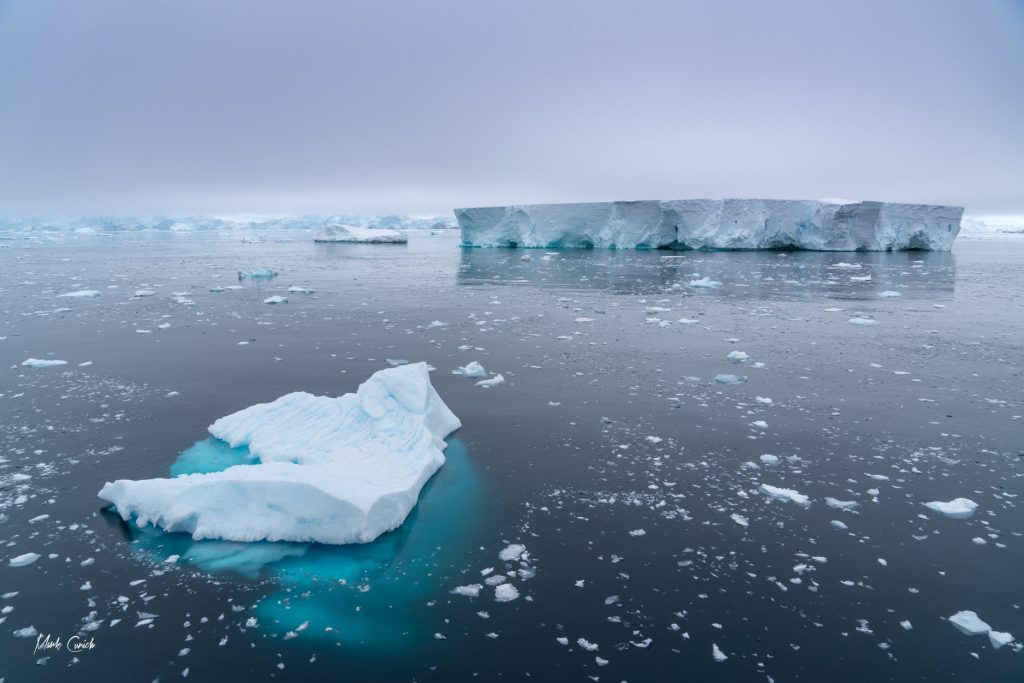The EU-funded Beyond EPICA project set up a camp at Little Dome C in East Antarctica, with the aim to obtain quantitative, high-resolution ice-core information on climate and environmental changes over the last 1.5 million years
The EU-funded Beyond EPICA project set up a camp at Little Dome C in East Antarctica, with the aim to obtain quantitative, high-resolution ice-core information on climate and environmental changes over the last 1.5 million years. This includes a major transition in the rhythm and intensity of the ice age cycles. Its investigation is vital to design effective mitigation and adaptation strategies to the current man-made climate change and improve our ability to predict future climate changes.

Project details
- Project title: Beyond EPICA Oldest Ice Core: 1,5 Myr of greenhouse gas – climate feedbacks (Beyond EPICA)
- Funding scheme: European Union Horizon 20220 Programme (EU H2020, Grant Agreement no.815384)
- Duration: 7 years (1 June 2019 – 31 May 2026)
- Project Coordinator: Prof. Carlo Barbante - Institute of Polar Sciences – National Research Council of Italy (ISP-CNR), Italy
- Project website: www.beyondepica.eu
NDC ASPECTS
One of the key features of the Paris Agreement (PA) for responding to climate change is the five-yearly Global Stocktake (GST). The purpose of the GST is to review the implementation of the PA in order to assess the collective progress towards achieving the purpose of the PA and its long-term goals. The outcome of the GST shall inform the PA’s Parties in updating and enhancing their Nationally Determined Contributions (NDCs). NDC ASPECTS will provide inputs to the GST and support the potential revision of existing NDCs, as well as the development of new NDCs for the post-2030 period. The project will particularly focus on four sectoral systems that are highly relevant in terms of the greenhouse gas emissions they produce yet have thus far made only limited progress in decarbonization. These sectors are transport and mobility (land-based transport and international aviation & shipping), emission-intensive industries, buildings, and agriculture, forestry, and other land-use(AFOLU), including their supply by and interaction with the energy conversion sector. For each of those sectors, NDC ASPECTS will undertake “Sectoral Conversations” to co-create evidence-based narratives with sectoral experts and stakeholders, drawing on the consortium’s extensive networks. These narratives will then be translated into global pathways informing the GST as well as national pathways for strategically selected countries for each of the four sectors. As an input to the Sectoral Conversations, the project will systematically assess transformation challenges and opportunities (economic, technological, political/institutional, capacity and awareness), taking into account experiences with the implementation of the first round of NDCs as well as model-based quantitative analyses. Additionally, NDC ASPECTS will identify ways and means to improve international governance to enable and facilitate sectoral transformations.Project details
- Project title: Assessing Sectoral Perspectives on Climate Transitions to support the Global Stocktake and subsequent NDCs (NDC ASPECTS)
- Funding scheme: European Union Horizon 2020 Programme (EU H2020, Grant agreement Nr: 101003866)
- Duration: 3 years (1 May 2021 – 30 April 2024)
- Project coordinator: Wuppertal Institute
- Project website: https://ndc-aspects.eu
Beyond Epica
Using ice-core information of the past to face climate change of the present and the future. To design effective mitigation and adaptation strategies to the current man-made climate change and improve our ability to predict future climate changes, we need to carefully study the past. The Antarctic ice sheet contains a unique record of the Earth’s climate history. The air bubbles embedded in the ice preserve a record of the Earth’s atmosphere through time. The EU-funded Beyond EPICA project set up a camp at Little Dome C in East Antarctica, with the aim to obtain quantitative, high-resolution ice-core information on climate and environmental changes over the last 1.5 million years. This includes a major transition in the rhythm and intensity of the ice age cycles. Its investigation is vital to understand the processes governing our climate system.
To better constrain the long-term response of Earth’s climate system to continuing greenhouse gas emissions, it is essential to turn to the past. A key advance would be to understand the shift in Earth’s climate response to orbital forcing during the ‘Mid-Pleistocene transition’ [MPT, 900,000 (900 kyr) to 1.2 million years (1.2 Myr) ago], when a dominant 40 kyr cyclicity gave way to the current 100 kyr period. It is critical to understand the role of forcing factors and especially of greenhouse gases in this transition. Unravelling such key linkages between the carbon cycle, ice sheets, atmosphere and ocean behaviour is vital, assisting society to design an effective mitigation and adaptation strategy for climate change.
Only ice cores contain direct and quantitative information about past climate forcing and atmospheric responses. However, the longest (EPICA) ice core record available to date covers only the last 800 kyr. The RIA Topic LC-CLA-08-2018 empowers the European ice core community to perform such an oldest ice core drilling and the project ‘Beyond EPICA’ is taking on this unique challenge and opportunity. The overarching scientific objective driving ‘Beyond EPICA’ is to obtain quantitative, high-resolution ice- core information on climate and environmental changes over the last 1.5 Myr. The cause and effect relationship that led to the enigmatic MPT change in the climate system is not understood yet, as important information on global changes in the climate system is still missing.
Most of this information, including the phasing of these changes in the Earth System can only be derived from a continuous ice core from Antarctica covering the last 1.5 Myr. This proposal uses the planning derived during the recent BE-OI CSA, and offers an excellent team (the only team globally that could at present accept the challenge of the call), underpinned by excellent infrastructure and capacity, and is currently ensuring it has an excellent location for the core.
The EU-funded Beyond EPICA project set up a camp at Little Dome C in East Antarctica, with the aim to obtain quantitative, high-resolution ice-core information on climate and environmental changes over the last 1.5 million years. This includes a major transition in the rhythm and intensity of the ice age cycles. Its investigation is vital to understand the processes governing our climate system.
To better constrain the long-term response of Earth’s climate system to continuing greenhouse gas emissions, it is essential to turn to the past. A key advance would be to understand the shift in Earth’s climate response to orbital forcing during the ‘Mid-Pleistocene transition’ [MPT, 900,000 (900 kyr) to 1.2 million years (1.2 Myr) ago], when a dominant 40 kyr cyclicity gave way to the current 100 kyr period. It is critical to understand the role of forcing factors and especially of greenhouse gases in this transition. Unravelling such key linkages between the carbon cycle, ice sheets, atmosphere and ocean behaviour is vital, assisting society to design an effective mitigation and adaptation strategy for climate change.
Only ice cores contain direct and quantitative information about past climate forcing and atmospheric responses. However, the longest (EPICA) ice core record available to date covers only the last 800 kyr. The RIA Topic LC-CLA-08-2018 empowers the European ice core community to perform such an oldest ice core drilling and the project ‘Beyond EPICA’ is taking on this unique challenge and opportunity. The overarching scientific objective driving ‘Beyond EPICA’ is to obtain quantitative, high-resolution ice- core information on climate and environmental changes over the last 1.5 Myr. The cause and effect relationship that led to the enigmatic MPT change in the climate system is not understood yet, as important information on global changes in the climate system is still missing.
Most of this information, including the phasing of these changes in the Earth System can only be derived from a continuous ice core from Antarctica covering the last 1.5 Myr. This proposal uses the planning derived during the recent BE-OI CSA, and offers an excellent team (the only team globally that could at present accept the challenge of the call), underpinned by excellent infrastructure and capacity, and is currently ensuring it has an excellent location for the core.

